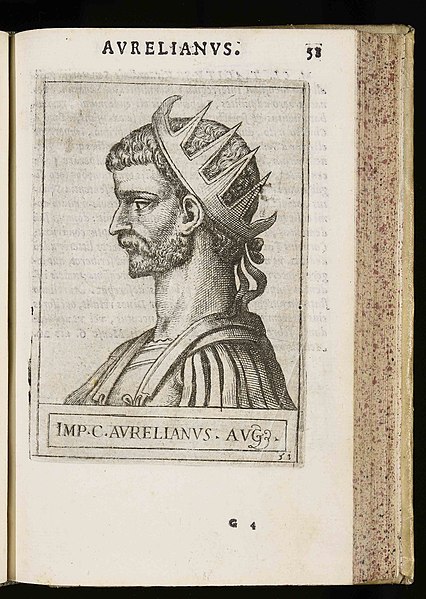It's always a delight to find the early medieval kings of France in unexpected places! One place I certainly would not have thought to find Merovingians is Herman Melville's White-Jacket or the World in a Man of War (1850); a rambling, lightly fictionalized account of the author's fourteen months of service in the US Navy. The main purpose of the book is to whip up public indignation against the use of flogging as a method of punishment--the plot, such as it is, is simply to chronicle the USS Neversink's voyage away from the United States and back again. Chapter describing events of the voyage are interspersed with narrative chapters describing the customs of the navy and the quirks of naval personnel.
One of these quirks is the sailors' treatment of their beards: the narrator, White-Jacket, and many of his fellow sailors, decide to grow their facial hair for the duration of the voyage. The passage describing the results ends with surprise medievalism.
But there were others of the crew labouring under the misfortune of long, lank Winnebago locks, or carroty bunches of hair, or rebellious bristles of a sandy hue. Ambitious of redundant mops, these still suffered their carrots to grow, in spite of all the ridicule. They looked like Huns and Scandinavians; and one of them, a young Down Easter, the unenvied proprietor of a thick crop of inflexible yellow bamboos, went by the name of Peter the Wild Boy; for, like Peter the Wild Boy of France, it was supposed that he must have been caught like a catamount in the woods of Maine. But there were many fine, flowing heads of hair to counterbalance such sorry exhibitions as Peter's.
What with long whiskers and venerable beards, then, of every variety and cut--Charles the Fifth's and Aurelian's--and endless goatees and imperials; and what with abounding locks, our crew seemed a company of Merovingians or Long-haired kings, mixed with savage Lombards or Longobardi, so called from their lengthy beards.
~ Herman Melville, White-Jacket or the World in a Man of War (pp 334-335).
I love how neatly Melville explains who the Merovingians and Lombards are. And without losing the lively rhythm of the sentence! How delightful.
Here's a little illustrated glossary to help you enjoy the full picture.
Winnebago locks: Winnebago is an exonym for the Ho-Chunk or Hoocągra, a Native American people whose traditional lands are in Wisconsin, Minnesota, Iowa, and Illinois. It's not clear to me whether 'Winnebago locks' refers to a specific hairstyle or whether Melville--using words like misfortune and lank--is stereotyping Native Americans as unkempt. Or both!
Nineteenth century photographs of Ho-Chunk men don't clarify the question of hairstyle but may reveal part of the image Melville had in his mind.
Huns: a group of people who lived in central Asia and eastern Europe, having migrated west between the fourth and sixth centuries. Scholars have persistently but inconclusively linked them to the Xiongnu, a confederation of central Asian nomads. Despite the terrible reputation of their fifth century leader, Attila, we have relatively little direct evidence from the Huns themselves. Here's a nice nineteenth century representation of that most famous Hun, with excellent hair and beard.
Down Easter: usually refers to someone from Maine. Can also refer
to a person from New England in general or someone from the Maritime
Provinces of Canada.
Peter the Wild Boy of France: a feral child who discovered in the woods near Hanover in 1725 by a hunting party led by the English King George I. He was brought to London, where he was the subject of considerable public curiosity. There's a lovely article about him by Lucy Worsley, with some magnificent illustrations, in the Public Domain Review. Why Melville thought he was French is not clear; perhaps he was thinking of another famous eighteenth century feral child, Victor of Aveyron. From a portrait of Peter in adulthood, we can get a sense of the kind of hair Melville had in mind.
catamount: a large wild cat with an incredibly wide range across North and South America. They are known for being solitary creatures and in Melville's day would certainly have been found in Maine. (Debate rages on if they are still.)
Charles the Fifth: Holy Roman Emperor, who ruled from 1519 until his abdication in 1556. He is known for: being a Habsburg, ruling one of Europe's largest empires, and opposing and later tolerating Lutheranism (his solution was to divide Germany into Catholic and Protestant states.) Most of his portraits seem to show him with a bushy but well-kept beard. This one also shows him with a rather lovely dog.
Aurelian: a third century Roman emperor, know for being the ruler who ended a fifty-year period of succession crisis, civil war, and external invasion. He is depicted as bearded on third century coins and statuary and was represented with a modest, nearly groomed beard in early modern prints.
imperials: according to Dr Alun Whitney the imperial is a particularly luxuriant and bushy mustache. His blog posts on the subject of types of beard is splendidly illustrated with all manner of glorious Victorian advertisements. (Dr Whitney has recently published a book, Concerning Beards, about the history of facial hair in England, which sounds excellent and is available open access.)
Merovingians or Long-haired kings: a dynasty who ruled parts of what is now France, Belgium, Switzerland and Germany between the late fifth and the late eighth century. The name Merovingian comes from their legendary first ruler, Merovech, said to be the son of a sea monster. They are know for being the longest-lasting dynasty of kings after the end of Roman imperial rule in the West and also for their incessant and bloody civil wars. Male members of the dynasty wore their hair long as a sign of their royal status as you can see in the early modern portrait of Chilperic I.
Lombards or Longobardi: these people invaded and settled in Italy in 568, having moved from the Danube region and Pannonia (modern day Hungary). They would rule Italy until the eighth century, when they were deposed by the Carolingian dynasty (who had gotten practice deposing people by toppling the Merovingians.) Melville may not have known or cared about this history; his concern was with the fact that the Lombards were famed for their long beards, as you see here in this splendid fifteenth century illustration.
The men of the Neversink, Melville tells us, have long hair, long beards, long mustaches--or all three. It's great fun how he uses the past to illustrate this.








